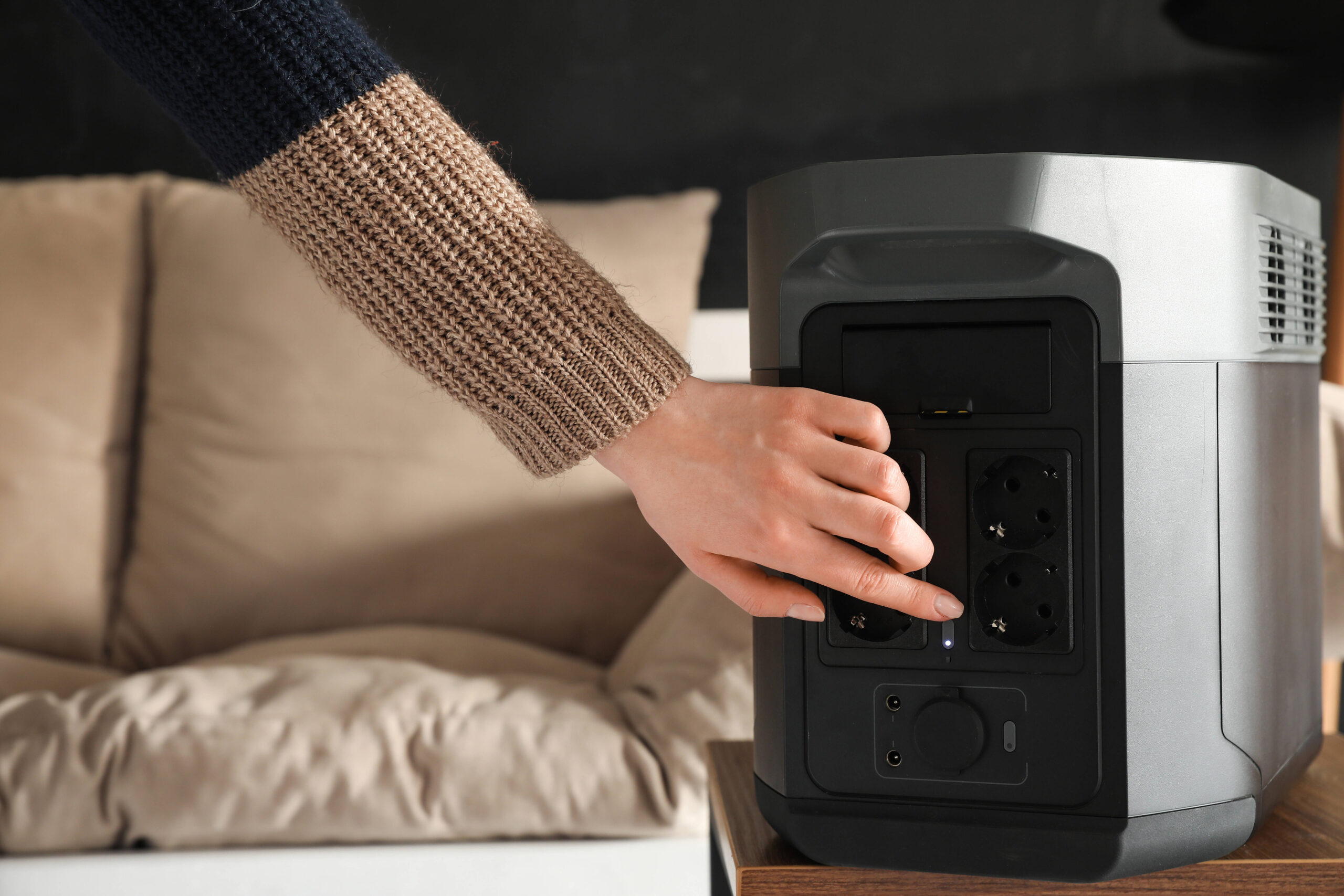Emergency Generators: Powering Through Outages and Emergencies
Updated: Apr 19, 2025
When storms hit or unexpected power outages occur, an emergency generator can keep essential systems running, helping you stay comfortable and safe. Discover how to choose the right generator for your needs, ensuring power for crucial appliances and devices during a blackout.

Emergency generators are a reliable solution to keep electricity flowing during power outages. Whether you’re dealing with short-term interruptions or preparing for extended emergencies, generators allow you to power appliances, lights, and medical devices. In this guide, we’ll explore the types of emergency generators, key features to consider, and real-world examples to help you find the best generator to keep you powered up during any emergency.
Why Emergency Generators Matter
An emergency generator can be a game-changer during a power outage, providing several key benefits:
- Maintains Basic Needs: Generators power essential appliances like refrigerators, heaters, and medical devices, helping you avoid food spoilage and stay safe.
- Supports Communication: Keeping phones, radios, and internet routers running allows you to stay connected with emergency services and receive critical updates.
- Enhances Comfort and Safety: Running lights, fans, or heating and cooling devices can make an extended outage more comfortable and safe.
Types of Emergency Generators
Emergency generators come in a variety of types, each suited to different power needs and emergency situations. Here are the main types:
-
Portable Generators:
Portable generators are versatile, mobile, and can power essential appliances by plugging directly into the generator. They’re typically gas-powered, making them easy to refuel but not ideal for long-term power. Portable generators are a great solution for short-term outages or camping, where you may only need to power a few appliances. -
Inverter Generators:
Inverter generators are quieter, more fuel-efficient, and produce “clean” energy, making them ideal for sensitive electronics like computers and medical devices. Inverter generators can be portable and usually run on gasoline or propane, but they produce less power than traditional portable generators, so they’re best for limited, short-term use. -
Whole-House (Standby) Generators:
These generators are permanently installed outside your home and automatically kick in during an outage. Powered by natural gas or propane, whole-house generators can supply power to your entire home, including HVAC systems, lights, and large appliances. They’re more expensive upfront but offer reliable, long-term backup power for major outages. -
Battery Backup (Solar Generators):
Battery backup generators, often referred to as solar generators, store electricity from the grid or solar panels. These are ideal for powering smaller appliances or essential electronics like medical equipment, and they’re safe for indoor use. However, battery backups may not provide as much power as gas or diesel generators, making them best suited for shorter outages or lightweight use.
Key Features to Consider When Choosing an Emergency Generator
To find the right emergency generator for your needs, consider the following features:
1. Power Output (Wattage)
Power output is one of the most important factors to consider. Generators are rated by their running watts (constant output) and starting watts (extra output needed to start devices with high initial power draws, like refrigerators). Estimate your power needs by adding the wattage of the essential items you plan to run.
- Portable Generators: Range from 1,000 to 7,500 watts. Ideal for small appliances or a few critical devices.
- Inverter Generators: Typically 1,000 to 4,000 watts. Great for sensitive electronics and lightweight appliances.
- Whole-House Generators: Provide up to 20,000 watts or more. Capable of powering entire homes and major systems.
2. Fuel Type and Availability
Different types of generators use different fuel sources, each with its pros and cons:
- Gasoline: Easily available but has a limited shelf life and can be difficult to store in large quantities.
- Propane: Cleaner-burning and has a longer shelf life than gasoline, but it requires a propane tank.
- Natural Gas: Provides continuous fuel for whole-house generators, but it requires a natural gas hookup, which may not be available in all areas.
- Solar or Battery: Battery-powered generators store electricity, and some are designed to recharge from solar panels, making them ideal for quiet, emission-free indoor use.
3. Run Time
A generator’s run time indicates how long it can run on a full tank of fuel (or charge). Consider your anticipated power needs and the expected length of outages:
- Portable and Inverter Generators: Usually offer 6-16 hours of run time on a single tank of fuel.
- Whole-House Generators: Designed for continuous operation with an automatic fuel supply, making them suitable for extended outages.
- Battery Backups: Dependent on battery capacity, most battery backups provide a few hours of power for essential devices but can be recharged with solar panels.
4. Noise Level
Generators can be noisy, and this can be a concern if you live in close quarters with neighbors or plan to use the generator indoors. Inverter generators are generally the quietest option, with some models operating at around 50-60 decibels (similar to conversation volume). Portable and whole-house generators are louder, often reaching up to 70-90 decibels, similar to a lawnmower.
5. Portability and Ease of Setup
If you need a generator for quick deployment or portability, look for lightweight models with wheels and handles. For whole-house generators, you’ll need a professional installation, but they offer automatic operation in emergencies. Portable generators require manual setup and should be placed outdoors to avoid carbon monoxide buildup.
6. Safety Features
Look for safety features like automatic shutoff for low oil and overload protection to prevent damage. If you’re planning to connect a generator directly to your home’s electrical system, invest in a transfer switch to avoid backfeeding, which can endanger utility workers.
Real-World Examples of Emergency Generators
Here are some popular generator models for a variety of needs, ranging from portable options to whole-house solutions.
1. Honda EU2200i Inverter Generator
- Type: Inverter Generator (Gasoline)
- Power Output: 2,200 starting watts, 1,800 running watts
- Run Time: Up to 8.1 hours at 25% load
- Noise Level: 48-57 decibels
- Features: Lightweight, fuel-efficient, safe for sensitive electronics
Best For: Those who need a quiet, portable generator for smaller power needs like electronics, lights, and small appliances. Ideal for short-term power needs and sensitive devices.
2. Champion 7500-Watt Dual Fuel Portable Generator
- Type: Portable Generator (Gasoline and Propane)
- Power Output: 9,375 starting watts (gas) / 8,400 starting watts (propane), 7,500 running watts (gas) / 6,750 running watts (propane)
- Run Time: Up to 8 hours (gas) or 5.5 hours (propane) at 50% load
- Noise Level: 74 decibels
- Features: Dual-fuel capability, electric start, suitable for powering multiple household items
Best For: Households looking for a versatile, powerful generator that can support large appliances and run on both gasoline and propane, making it highly adaptable in emergencies.
3. Generac Guardian 22kW Whole-House Generator
- Type: Standby Generator (Natural Gas or Propane)
- Power Output: 22,000 running watts
- Run Time: Continuous (connected to natural gas line)
- Noise Level: 67 decibels
- Features: Automatic start, mobile monitoring, supplies power to the entire home
Best For: Homeowners who want continuous, hands-off power for the entire home. Ideal for areas with frequent power outages, it powers everything from HVAC systems to kitchen appliances.
4. Jackery Explorer 1000 Portable Power Station
- Type: Battery Backup (Rechargeable with solar panels or wall outlet)
- Power Output: 1,000 watts (1,002 watt-hours capacity)
- Run Time: Varies based on usage (e.g., can power a mini-fridge for 17 hours)
- Noise Level: Silent operation
- Features: Lightweight, eco-friendly, safe for indoor use, compatible with solar panels
Best For: Small indoor setups or apartment dwellers who need backup power for essential electronics and medical devices. Great for short-term outages and portable enough for travel or outdoor use.
Tips for Using Your Generator Safely
Safety is critical when using an emergency generator, especially in high-stress situations. Here are a few essential safety tips:
- Use Outdoors Only: Gas generators emit carbon monoxide, which can be deadly. Always run portable generators outdoors, at least 20 feet away from windows, doors, and vents.
- Install a Transfer Switch: For whole-house or high-powered portable generators, a transfer switch ensures safe connection to your home’s electrical system and prevents backfeeding.
- Store Fuel Safely: Store fuel in approved containers in a cool, well-ventilated area, away from the generator. Keep extra fuel on hand if you expect long-term outages.
- Test Your Generator Regularly: Run your generator every few months to ensure it’s in good working order and to familiarize yourself with its operation.
Conclusion
An emergency generator is a valuable investment for maintaining essential power during outages, from short-term storms to prolonged blackouts. Whether you choose a portable, inverter, whole-house, or battery backup generator, the key is to select one that matches your power needs, budget, and home setup. By planning ahead and using your generator safely, you’ll be prepared to power through any emergency with ease and confidence.

